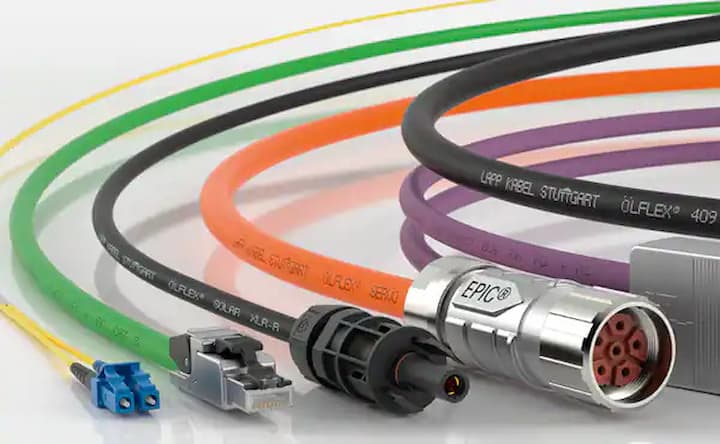During the rise in demand for conductors and cables in the 50s, an idea was born of creating the first industrially produced cable and thus a company was born Lapp. It was in 1957 when the first manufactured control cable became a reality and it was produced by Lapp called the Olflex cable. Lapp really fortified their image as a brand in 1959 when the company change its structure.

Oskar Lapp would worry about orders and customers while his wife Ursula would take care of order processing and the commercial side. This internal split up of duties was crucial for the future success of the company which had its first-ever subsidiary in the US back in 1979. Since then the company has focused on the expansion and creation of Lapp systems which made it a global player in 2005. This was all thanks to the company’s first-ever product the Olflex cable.
Olflex Cables
What Are They?
The once innovative solution is the standard for cable flexibility today. All control and connecting cables from Lapp fall under the category of Olflex which use colour-coded wires. Olflex is the brand name of the cables which have become some of the most widely used cables in the world. The flexibility of Olflex cables has been improved upon for many decades and being the very first cables with flexibility at their core has given them a great head start.
Benefits
Olflex flexible cables are able to fulfil the most demanding requirements when it comes to both mechanical and electrical properties. They are also almost entirely oil-resistant and applicable virtually everywhere. Olflex control cables are also designed to be halogen-free and suitable for fixed connection as well as energy supply chains.
Types of Cable Flexibility
Motion Rated
There are two types of cable flexibility, motion and non-motion rated. Motion rated flexibility calls for different types of cables to be used alongside just flexible cables. These include cables that can bear continuous flex (bending and rolling) and torsional flex too. Most cables for flexible use are made so that they can bear a solid level of flex without too much strain being put on them. Continuous flex cables, on the other hand, are made so that they can withstand anywhere between 1 and 20 million flex cycles.

These cables are used in applications such as moving gantries and robotics. Torsional flex cables are made so that they can withstand constant twisting around an axis. You can pull these cables back and forth, bend them or start twisting them too and you won’t be able to damage them after you’ve done that for at least 2 million times. Such control cables can endure up to 14 million flex cycles and they can rotate 360 °C around an axis.
Non-Motion Rated
With non-motion rated cables you have two options, either stationary or stationery – for routing. Cables rated for stationary motion have some give to them but they are mainly rigid. They are rated for no movement as you would expect and are extremely common and effective. The thing is that you can’t route these cables around corners as they can’t withstand much flexing or bending. Stationary – for routing cables are self-explanatory. They can be routed through machinery and within cable trays with a certain degree of flexibility around corners and curves.
Some Tried and True Olflex Cables
Olflex Classic 110
The Olflex Classic 110 is a control and connection cable that is meant to be used for fixed installations as well as one that requires occasional flexing without any tensile loads. You can use the classic 110 in dry and damp rooms which and for torsional applications too. This Olflex cable is also resistant to chemicals and oil.
Olflex Classic 400

With the classic 400, you get a cable similar to the classic 110 as it is also an oil-resistant cable. Olflex cables are generally known as being suitable at least in applications with high mechanical strength but with this cable, you get so much more. The PUR outer sheathing of the classic 400 makes the cable resistant to diluted acids, aqueous alkaline solutions, and other chemicals.
Olflex Classic FD 810
Using the classic FD 810 cable has been shown to be beneficial in moving machine parts such as power chains. Thanks to the non-woven wrapping, PVC outer sheath and tinned-copper braiding the FD 810 is flame retardant too. This type of cable is designed to last 5 million bending cycles with travel distances up to 10 meters.
Olflex Robot 900 P
If you want a highly flexible PUR cable, the Olflex Robot 900 P is a true example of such a cable. With it able to bear torsion angles up to 360° you can use this TPE cable for space-saving installation as well as in applications with chemical presence. The Robot 900 P allows for both faster speeds and acceleration which can crankcase the efficiency of machines.
